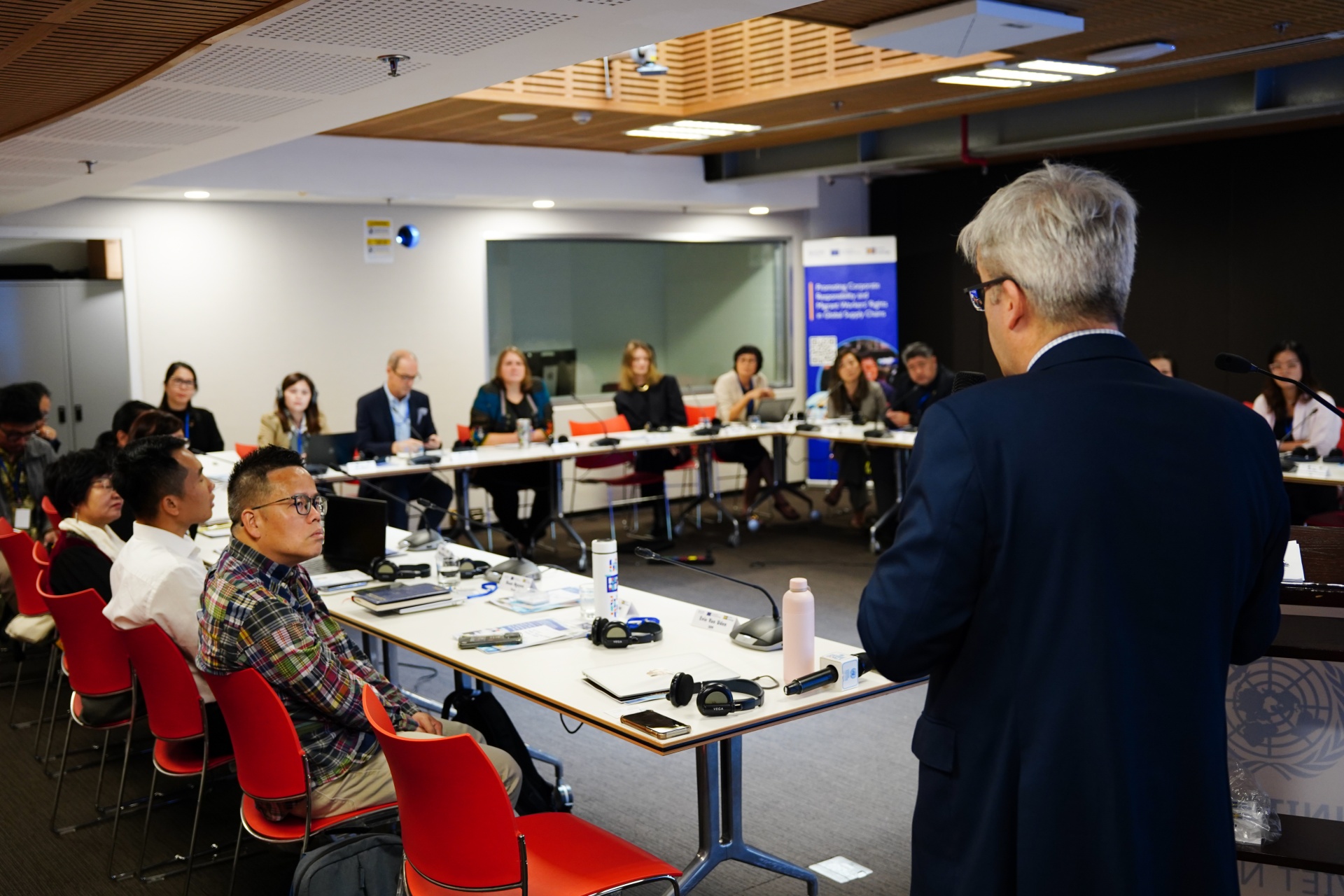Sustainable Supply Chain: Sharing Best Practices – ReliefWeb

Report on Collaborative Humanitarian Operations and Sustainable Development Goal Alignment
Introduction: The SCI Sudan Shared Facility Initiative
A collaborative initiative led by SCI Sudan, involving the establishment of a shared facility for humanitarian agencies, serves as a significant case study in operational efficiency and sustainability. By hosting partner organizations such as Care and Mercy Corps, the model demonstrates a practical approach to resource optimization. The shared premises include warehouses, offices, and accommodation, creating a centralized hub that yields substantial financial, environmental, and collaborative benefits, directly contributing to the achievement of several Sustainable Development Goals (SDGs).
Key Outcomes and Benefits
The implementation of the shared facility model has resulted in measurable positive outcomes across multiple domains:
- Financial Efficiency: Participants achieve significant cost reductions through the division of expenses for rent and shared services, including security, cleaning, and internet connectivity.
- Environmental Sustainability: The co-location of agencies minimizes the need for multiple, independent power generators. This consolidation directly reduces diesel fuel consumption, leading to a notable decrease in CO₂ emissions and advancing climate action objectives.
- Operational Synergy: Beyond cost savings, the arrangement fosters a collaborative environment. Pooled resources improve the quality of shared services and optimize the use of essential infrastructure, aligning with principles of responsible consumption.
Alignment with Sustainable Development Goals (SDGs)
The SCI Sudan initiative provides a strong example of localizing the SDGs within humanitarian operations. The project’s outcomes are directly aligned with the following goals:
- SDG 17: Partnerships for the Goals: The core of the initiative is the partnership between SCI, Care, Mercy Corps, and other agencies. This collaboration exemplifies the multi-stakeholder approach required to achieve sustainable development.
- SDG 13: Climate Action: By reducing the number of active generators and lowering diesel consumption, the project actively mitigates its carbon footprint, contributing directly to climate action through reduced CO₂ emissions.
- SDG 7: Affordable and Clean Energy: The model promotes more efficient energy consumption by reducing reliance on fossil fuels (diesel). It represents a step towards more sustainable energy practices in off-grid humanitarian contexts.
- SDG 12: Responsible Consumption and Production: Sharing facilities, equipment, and services ensures the efficient use of resources, minimizes waste, and embodies the principles of responsible consumption and production patterns.
- SDG 11: Sustainable Cities and Communities: The efficient use of infrastructure and resources contributes to creating more sustainable and resilient operational hubs for humanitarian activities.
1. Which SDGs are addressed or connected to the issues highlighted in the article?
SDG 17: Partnerships for the Goals
The entire article is centered on the concept of partnership. The collaboration between humanitarian agencies like SCI Sudan, Care, and Mercy Corps through a shared facility arrangement is a direct example of a multi-stakeholder partnership aimed at achieving common goals, which is the core principle of SDG 17.
SDG 12: Responsible Consumption and Production
The initiative directly promotes responsible consumption by optimizing the use of resources. The article highlights how sharing facilities leads to “lower electricity bills” and minimized overall consumption of resources like fuel. This focus on efficiency and reducing the material footprint of operations aligns with SDG 12.
SDG 13: Climate Action
The article explicitly mentions the environmental benefits of the partnership, stating that minimizing the need for multiple generators “contributes to a notable reduction in CO₂ emissions.” This action is a direct measure to mitigate climate change, which is the central focus of SDG 13.
SDG 7: Affordable and Clean Energy
By reducing the number of generators and overall diesel consumption, the initiative promotes greater energy efficiency. This action contributes to the goals of SDG 7, specifically by improving the efficiency of energy use within the humanitarian operations described.
2. What specific targets under those SDGs can be identified based on the article’s content?
SDG 17: Partnerships for the Goals
- Target 17.16: Enhance the global partnership for sustainable development, complemented by multi-stakeholder partnerships that mobilize and share resources.
- The article describes a partnership where organizations “share knowledge, expertise… and financial resources” by co-locating. The shared facility itself is a mobilized resource, and the cost savings on rent, electricity, and fuel represent a more efficient use of financial resources.
- Target 17.17: Encourage and promote effective civil society partnerships.
- The collaboration between SCI, Care, and Mercy Corps is a prime example of an effective partnership among civil society organizations (humanitarian agencies) that builds on their collective resources to improve operational efficiency and sustainability.
SDG 12: Responsible Consumption and Production
- Target 12.2: By 2030, achieve the sustainable management and efficient use of natural resources.
- The article details how the shared facility leads to the efficient use of natural resources. It explicitly states that the arrangement “minimizes overall consumption” of electricity and results in “lower diesel usage,” directly addressing this target.
SDG 13: Climate Action
- Target 13.2: Integrate climate change measures into policies, strategies and planning.
- The shared facility model represents an operational strategy that integrates climate change mitigation measures. By designing a system that inherently reduces emissions, the organizations are embedding climate action into their logistical planning.
SDG 7: Affordable and Clean Energy
- Target 7.3: By 2030, double the global rate of improvement in energy efficiency.
- The article’s focus on reducing energy consumption through shared infrastructure is a direct contribution to energy efficiency. Needing “fewer generators to power the shared space” is a clear example of improving the efficiency of energy use compared to each organization running its own generator.
3. Are there any indicators mentioned or implied in the article that can be used to measure progress towards the identified targets?
SDG 17: Partnerships for the Goals
- Implied Indicator: Amount of financial resources saved through partnership. The article states that organizations “significantly reduce costs related to rent, electricity, and fuel,” which can be quantified to measure the financial benefit of the partnership.
- Implied Indicator: Number of organizations participating in the partnership. The article mentions SCI, Care, and Mercy Corps, and this number can be used as a measure of the partnership’s scale.
SDG 12: Responsible Consumption and Production
- Implied Indicator: Reduction in fuel consumption. The article explicitly mentions that the setup “cuts down on diesel consumption,” which is a measurable indicator of more efficient resource use.
- Implied Indicator: Reduction in electricity consumption. The text points to “lower electricity bills” and minimized “overall consumption” as a direct result of the shared facility, which can be tracked.
SDG 13: Climate Action
- Indicator: Reduction in greenhouse gas emissions. The article directly states that the initiative leads to a “notable reduction in CO₂ emissions.” This is a key, quantifiable indicator for measuring climate action.
SDG 7: Affordable and Clean Energy
- Implied Indicator: Improvement in energy efficiency. This can be measured by the reduction in the number of generators needed per organization or the decrease in fuel consumed per unit of operational output. The article’s point about needing “fewer generators” directly implies this improvement.
4. Create a table with three columns titled ‘SDGs, Targets and Indicators” to present the findings from analyzing the article.
| SDGs | Targets | Indicators (Mentioned or Implied in the Article) |
|---|---|---|
| SDG 17: Partnerships for the Goals | 17.16: Enhance partnerships that mobilize and share resources. 17.17: Encourage effective civil society partnerships. |
|
| SDG 12: Responsible Consumption and Production | 12.2: Achieve the sustainable management and efficient use of natural resources. |
|
| SDG 13: Climate Action | 13.2: Integrate climate change measures into strategies and planning. |
|
| SDG 7: Affordable and Clean Energy | 7.3: Double the rate of improvement in energy efficiency. |
|
Source: reliefweb.int
What is Your Reaction?
 Like
0
Like
0
 Dislike
0
Dislike
0
 Love
0
Love
0
 Funny
0
Funny
0
 Angry
0
Angry
0
 Sad
0
Sad
0
 Wow
0
Wow
0



















































.jpg.webp?itok=0ZsAnae9#)

























